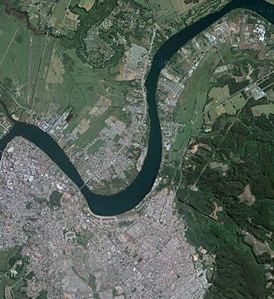Chile, and particularly its central and south-central region, is well known by exhibiting substantial land changes as a result of human-induced processes (Donoso and Lara 1995; Echeverría et al. 2007a; Echeverría et al. 2011).
 Temperate forests in the south-central Chile are rapidly disappearing as a result of land use change. One of the most severely transformed landscapes in Chile has exhibited a deforestation rate of 5.4% per year, one of the highest rates reported in Latin America in the last decades (Echeverría et al. 2006).
Temperate forests in the south-central Chile are rapidly disappearing as a result of land use change. One of the most severely transformed landscapes in Chile has exhibited a deforestation rate of 5.4% per year, one of the highest rates reported in Latin America in the last decades (Echeverría et al. 2006).
Landscape change in Chile has been related to diverse unsustainable practices such as forest logging to supply the increasing demand for wood and paper products, conversion of native forests and natural lands to pasturelands, crops and urban around as a result of human-set fires, high grading and other practices (Armesto et al. 2010; Lara et al. 2002; Lara et al. 2010). These actions have led to a loss of biodiversity (Hechenleitner et al. 2005; Newton 2007; Simonetti 2011) and ecosystem services (Lara et al. 2009; Little et al., 2009), and an increase in invasive species (Quiroz et al. 2009). Therefore, our work will focus on:
(a) Within this context, ECO will pursue the design of landscape arrays that are optimal to fulfill certain goals of goods and ES and their location. This will be jointly addressed with HD and MO.
(b) ECO and HD will define the time frames, rates, costs of the recovery of water provision as an ES from ecological restoration in watersheds in Southern Chile.
(c) A third objective will be the assessment of reduced precipitation predicted from climate models (CD and MO) for Central and Southern Chile on water provision as an ES from watersheds, considering different climatic and land-use scenarios.
(d) In collaboration with BGC and MO, ECO will quantify the potential fertilization and acidification that may occurs over Southern Chile in connection with urban growth. This is of outmost importance for expected changes in agriculture, and forestry.
